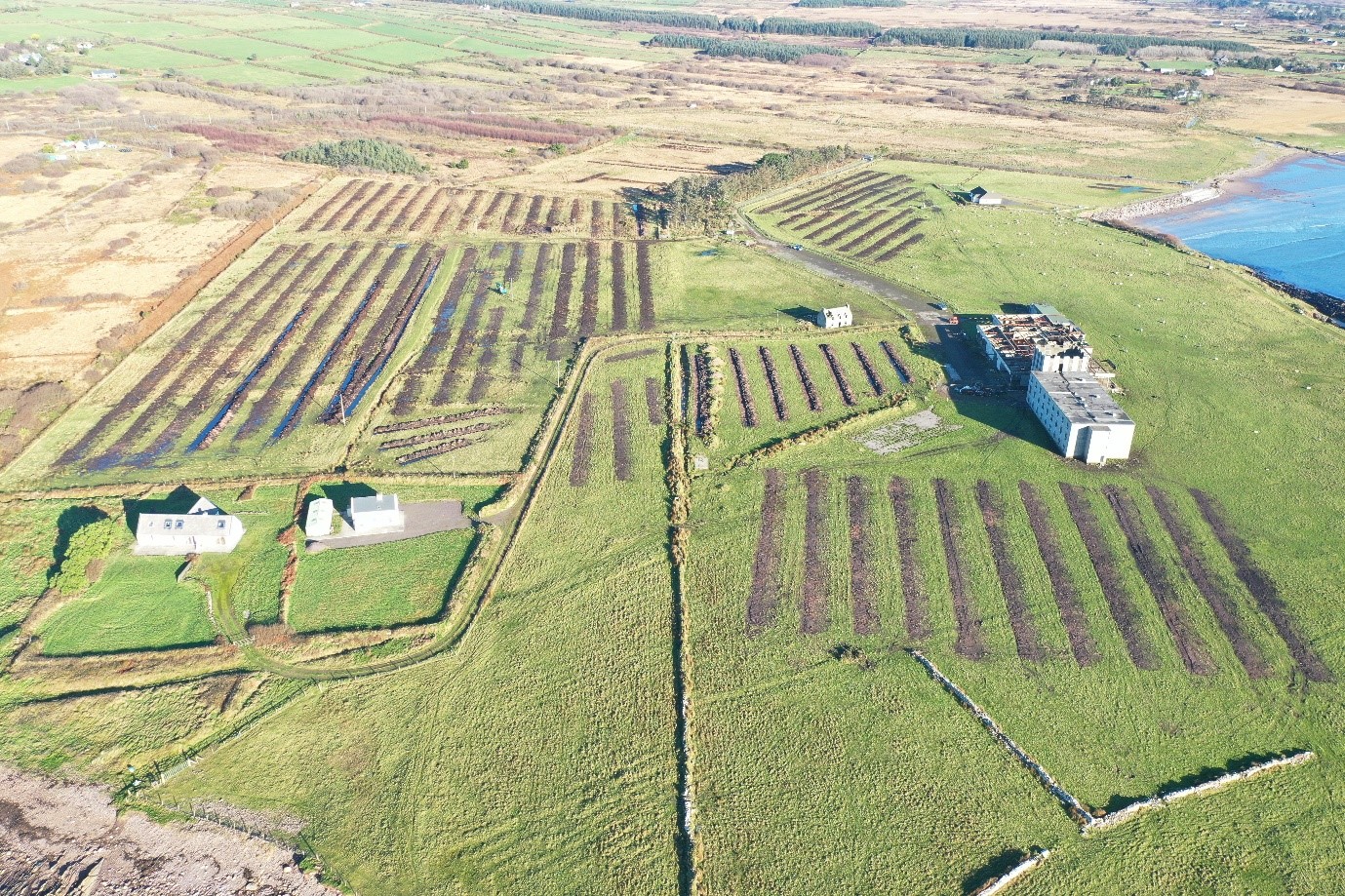2025:027 - Reenroe, Emlaghmore West, Kerry
County: Kerry
Site name: Reenroe, Emlaghmore West
Sites and Monuments Record No.: N/A
Licence number: 24E1054
Author: Katarzyna Labaj
Author/Organisation Address: 195 Shanakill, Tralee, Co. Kerry
Site type: No archaeology found
Period/Dating: N/A
ITM: E 445827m, N 568351m
Latitude, Longitude (decimal degrees): 51.846064, -10.237738
Licensed archaeological testing was undertaken in the townlands of Reenroe and Emlaghmore West, Co. Kerry in November/December 2024.The proposed development site is located at the northernmost limits of Ballinskelligs Bay.
A series of 60 test trenches (T1-T60) extending for c.7085m were opened across the testable footprint of the proposed development. With the exception of the southernmost limits of the site, in proximity to a derelict hotel building, all fields were very soft and waterlogged due to very thick bog cover. All excavated trenches revealed similar stratigraphy where a deep organic peat layer overlay natural subsoil comprising of mainly yellow or light grey silty sand material with frequent stone inclusions. The depth of the peat varied from over 3m in the northern limits of the site and decreased in thickness towards the southern limits where it was manifest in the test trenches as a thin c.0.2m layer of sandy peaty material.
Nothing of archaeological interest was recorded in any trenches and no artefacts were recovered during testing.

